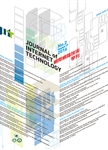版权所有:内蒙古大学图书馆 技术提供:维普资讯• 智图
内蒙古自治区呼和浩特市赛罕区大学西街235号 邮编: 010021

作者机构:Beijing Jiaotong Univ State Key Lab Rail Traff Control & Safety Sch Elect & Informat Engn Beijing Peoples R China Temple Univ Dept Comp & Informat Sci Philadelphia PA 19122 USA Beijing Univ Posts & Telecommun Beijing Key Lab Intelligent Telecommun Software & Beijing Peoples R China
出 版 物:《JOURNAL OF INTERNET TECHNOLOGY》 (J. Internet Technol.)
年 卷 期:2014年第15卷第1期
页 面:43-52页
核心收录:
基 金:National Natural Science Foundation of China [61271305, 61202431, 61003280] Specialized Research Fund for the Doctoral Program of Higher Education Fundamental Research Funds for the Central Universities [2013JBM008] Beijing Higher Education Young Elite Teacher Project [YETP0535] Open Projects of Beijing Key Lab of Intelligent Telecomm Software and Multimedia State Key Laboratory of Rail Traffic Control and Safety [RCS2012K008] Beijing Jiaotong University Jiangsu Provincial Natural Science Foundation of China [BK2011170] SRF for ROCS, SEM
主 题:Directional sensor networks Artificial fish-swarm Area coverage Coverage enhancement
摘 要:Area coverage is an essential issue for sensor networks. The majority of the existing studies on area coverage are based on omnidirectional sensing model. However, some popular sensors have a limited angle of sensing range. This paper investigates area coverage enhancement by directional sensors with tunable sensing orientations. Firstly, we model the deployment of directional sensors as a 2D stationary Poisson point process, and evaluate the relationship between the coverage probability and the number of directional sensors. We introduce the notion of sensing centroid, which is the geometric center of a sensing sector to simplify the pending problem. Moreover, we regard sensing centroid as artificial fish, which search an optimal solution in the solution space by simulate fish swarm behaviors with a tendency toward high food consistence. Considering that AFs have to satisfy both kinematic constraint and dynamic constraint in the process of motion, we propose a constrained artificial fish-swarm algorithm, and discuss the control laws to guide the behaviors of AFs with quick convergence speed. Finally, mass of simulations validate the theoretical findings of our solution.